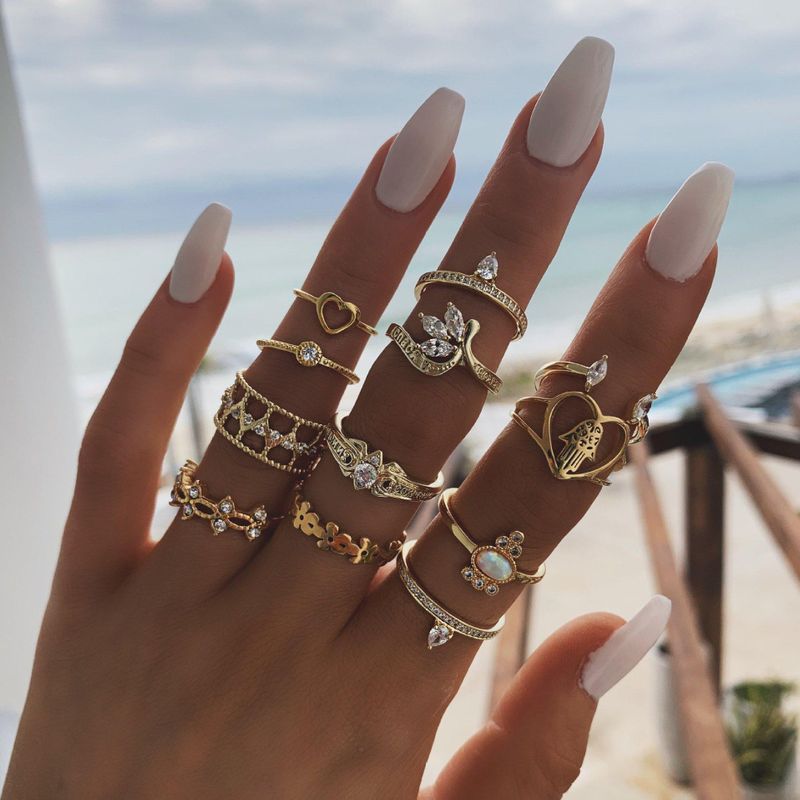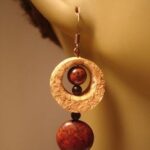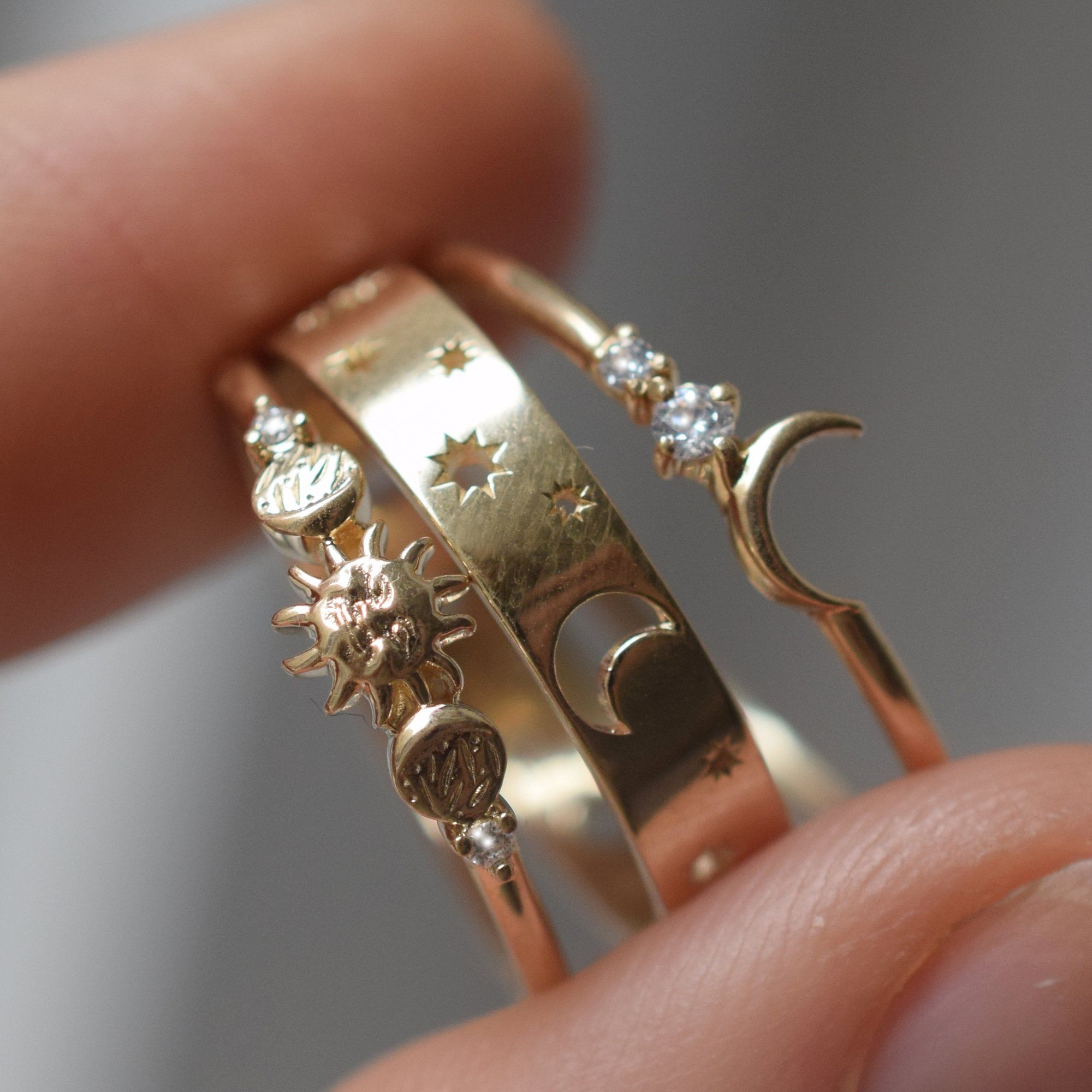Are you wondering how to solder fine delicate jewelry? Soldering delicate jewelry requires precision, patience, and the right techniques to ensure a professional and polished result. In this article, we will explore the necessary tools, workspace preparation, techniques, tips for handling delicate materials, troubleshooting common issues, and finishing and cleaning processes for soldering fine delicate jewelry.
Proper soldering is crucial in creating high-quality delicate jewelry pieces. The right technique can make all the difference in ensuring that your precious gemstones and thin metal components are securely joined without causing any damage. Understanding the importance of proper soldering in delicate jewelry is essential for any jeweler or hobbyist looking to create intricate and stunning pieces.
In the following sections, we will delve into the necessary tools and materials for soldering fine delicate jewelry, preparing a safe and organized workspace, techniques such as sweat soldering and using low-temperature solder, tips for handling delicate materials like gemstones and pearls, troubleshooting common soldering issues in fine jewelry, as well as post-soldering techniques for a professional finish.
By understanding these key elements of soldering fine delicate jewelry, you can elevate your craftsmanship and create exquisite pieces with confidence.
Necessary Tools and Materials for Soldering Fine Delicate Jewelry
When it comes to soldering fine delicate jewelry, having the right tools and materials is essential for achieving professional results. One of the most important tools for soldering delicate jewelry is a precision torch. A small, handheld butane torch allows for precise control of the flame, making it ideal for working with delicate materials. Additionally, investing in a quality soldering iron with adjustable temperature settings can help prevent overheating and damage to the jewelry.
In addition to the right tools, using the correct solder is crucial when working with fine delicate jewelry. Low-temperature solders are preferred as they minimize the risk of heat damage to gemstones and pearls. It’s also important to have a variety of solder thicknesses on hand to accommodate different types of joints and materials. Fine gauge solders are ideal for thin metal components, while medium or heavy gauge solders are better suited for larger or stronger joints.
Other necessary materials include flux, which helps the solder flow evenly and prevents oxidation during the soldering process. Tweezers and third-hand tools can also be incredibly useful for holding tiny components in place while soldering. By having these essential tools and materials at your disposal, you will be well-prepared to tackle any soldering project when working with delicate jewelry.
Achieving success in soldering fine delicate jewelry requires not only skill but also the use of proper tools and materials. Understanding how to select the right equipment, such as precision torches and low-temperature solders, is crucial in ensuring that delicate gemstones, pearls, and thin metal components remain unharmed during the process. Therefore, having a well-equipped workspace is key to mastering the art of soldering fine delicate jewelry.
Preparing the Workspace
When it comes to soldering fine delicate jewelry, creating a safe and organized workspace is crucial for achieving successful results. Here are some important sub-sections that will guide you in preparing the ideal environment for soldering your precious pieces.
Ventilation and Safety Measures
Proper ventilation is essential when soldering, as it helps to disperse potentially harmful fumes produced during the soldering process. It’s important to work in a well-ventilated area or use a fume extractor to ensure a safe environment. Additionally, wearing safety goggles and heat-resistant gloves can protect you from potential hazards such as hot metal splatter or accidental contact with the soldering iron.
Organizing Tools and Materials
Before starting the soldering process, gather all the necessary tools and materials within reach of your work area. This includes your soldering iron, solder, flux, tweezers, and any other components needed for the specific project. Keeping everything organized will not only make the process more efficient but also reduce the risk of misplacing or accidentally damaging delicate materials.
Fire Safety
Since soldering involves working with high temperatures, it’s important to have fire safety measures in place. Keep a fire extinguisher nearby and ensure that your workspace is clear of any flammable materials. In case of emergency, having quick access to a fire extinguisher can prevent small accidents from turning into major disasters.
By following these guidelines for preparing your workspace, you can create a safe and organized environment for soldering fine delicate jewelry with confidence. Remember that taking the time to set up properly will not only protect you and your surroundings but also contribute to the success of your jewelry-making endeavors.
Techniques for Soldering Fine Delicate Jewelry
Soldering delicate jewelry requires precision and special techniques to ensure that the pieces are not damaged during the process. One of the most common methods for soldering fine delicate jewelry is sweat soldering, which involves using a minimal amount of solder to create a clean, seamless joint. This technique is especially useful when working with thin metal components or fragile gemstones, as it reduces the risk of overheating and damage.
Another important aspect of soldering fine delicate jewelry is using low-temperature solder. Unlike traditional solder, low-temperature solder melts at a lower temperature, reducing the risk of heat damage to delicate materials such as pearls or opals. This type of solder is also ideal for creating intricate designs and working with small, detailed components.
When learning how to solder fine delicate jewelry, it’s essential to practice these techniques on scrap pieces before working on valuable materials. This will help you refine your skills and gain confidence in handling delicate materials without causing any damage. Additionally, using the right tools and materials specifically designed for fine jewelry soldering can make a significant difference in the outcome of your work.
| Soldering Technique | Description |
|---|---|
| Sweat Soldering | Involves minimal amount of solder for seamless joint; reduces risk of overheating delicate materials |
| Low-Temperature Solder | Melts at lower temperature to avoid heat damage; ideal for intricate designs and small components |
Tips for Handling Delicate Materials
Working with delicate materials in jewelry soldering requires a high level of precision and care to avoid damaging the components. Here are some tips for handling gemstones, pearls, and thin metal components during the soldering process:
- Gemstones: When soldering jewelry that includes gemstones, it’s important to protect them from heat damage. To do this, you can use heat sinks such as tweezers or binding wire to draw heat away from the stone. Additionally, consider using a low-temperature solder to minimize the risk of damage. Always clean the gemstone thoroughly after soldering to remove any residual flux or tarnish.
- Pearls: Soldering near pearls can pose a risk of damage due to their organic nature. To protect pearls during the soldering process, it’s best to remove them from the piece if possible. If removal is not an option, cover the pearls with a wet tissue or damp cloth to shield them from direct heat exposure. After soldering, gently clean the pearls with a soft cloth and mild soap.
- Thin Metal Components: Thin metal components in delicate jewelry require extra caution when soldering. Use fine-grade solders and fluxes designed for thin metals to minimize potential warping or burning. Additionally, employ precise positioning and secure clamping techniques to hold thin metal components in place during the soldering process.
By following these tips for handling delicate materials during jewelry soldering, you can ensure that your precious gemstones, pearls, and thin metal components remain unharmed while achieving secure and professional-quality joints.
Remember that working with delicate materials requires patience and practice. It’s crucial to master these techniques through trial and error in order to become proficient at soldering fine delicate jewelry without causing any damage.
Troubleshooting Common Soldering Issues in Fine Jewelry
Soldering fine delicate jewelry requires precision and attention to detail, but it also comes with its fair share of challenges. From overheating to solder flow and joint alignment, troubleshooting common soldering issues is essential for achieving professional and polished results in your jewelry making. In this section, we will explore the different problems that may arise during the soldering process and discuss how to effectively address them.
Overheating
One of the most common issues when soldering fine delicate jewelry is overheating, which can lead to damage or discoloration of the materials. To prevent overheating, it is crucial to use a low-temperature solder and work with a precise flame that is focused on the joint being soldered. Additionally, employing heat sinks or heat-absorbing materials near the joint can help distribute the heat and protect adjacent components from damage.
Solder Flow
Another challenge in soldering delicate jewelry is controlling the flow of solder. When working with thin metal components, it is easy for excess solder to spread beyond the intended joint, compromising the overall design. To address this issue, using a minimal amount of solder and employing techniques such as sweat soldering can help control the flow and ensure a clean and precise finish.
Joint Alignment
Ensuring proper alignment of joints in delicate jewelry pieces can be tricky, especially when working with small or intricate designs. Using tools such as locking tweezers or third hand tools can provide support and stability when positioning components for soldering. In addition, practicing patience and taking your time to align each joint accurately will ultimately contribute to a successful outcome.
By understanding how to troubleshoot common soldering issues such as overheating, solder flow, and joint alignment when working with fine delicate jewelry, you can enhance your skills as a jewelry maker and achieve professional results in your creations. Paying attention to these details will not only improve the quality of your work but also contribute to the longevity and durability of your finished pieces.
Finishing and Cleaning
Soldering fine delicate jewelry requires attention to detail, precision, and care. Once the soldering process is complete, it’s essential to finish and clean the jewelry piece to achieve a professional and polished look. This final step not only enhances the overall appearance of the jewelry but also ensures its longevity. In this section, we will explore the post-soldering techniques that can be used to achieve a flawless finish.
After soldering, the jewelry piece may have flux residue or oxidation from the heating process. One effective way to clean the jewelry is by using a solution of warm water and mild detergent. Gently scrub the piece with a soft-bristled brush to remove any stubborn residues. It is important to dry the jewelry thoroughly after cleaning to prevent water spots or stains.
Another post-soldering technique for achieving a professional look is polishing. Use a polishing cloth or jeweler’s rouge to gently polish the soldered areas, bringing out their natural shine. However, when working with gemstones and pearls, it’s crucial to exercise caution as excessive polishing can damage these delicate materials. Protect these stones by covering them with masking tape before polishing.
In addition to cleaning and polishing, it’s important to inspect the soldered joints for any imperfections or unevenness. If necessary, rework any areas that require additional soldering or smoothing out using small files or sandpaper.
| Post-Soldering Technique | Description |
|---|---|
| Cleaning | Using warm water and mild detergent to remove flux residue and oxidation. |
| Polishing | Gently polishing soldered areas with a polishing cloth or jeweler’s rouge. |
| Inspection | Thoroughly inspecting soldered joints for imperfections and reworking if necessary. |
Conclusion
In conclusion, learning how to solder fine delicate jewelry requires a combination of precision, patience, and practice. As outlined in this article, understanding the necessary tools and materials, preparing the workspace, mastering techniques such as sweat soldering and using low-temperature solder, and developing tips for handling delicate materials are all essential steps in achieving successful soldering results.
However, it’s important to note that troubleshooting common soldering issues and post-soldering techniques for finishing and cleaning are equally crucial aspects of the process.
Precision is key when soldering fine delicate jewelry, as even the smallest mistake can result in damage or imperfections. Practice allows jewelers to hone their skills and become more adept at maneuvering through the intricate process of soldering. Whether it’s dealing with common issues like overheating or ensuring proper joint alignment, practicing these techniques repeatedly will ultimately lead to improved proficiency.
Ultimately, the art of soldering fine delicate jewelry is a craft that demands both technical knowledge and hands-on experience. By implementing the tips and techniques outlined in this article and consistently practicing them with precision in mind, jewelry makers can achieve professional results that showcase their dedication to quality craftsmanship.
Frequently Asked Questions
How Do You Solder Delicate Jewelry?
Soldering delicate jewelry requires a steady hand and precise control of the soldering iron. It’s important to use the smallest amount of heat necessary to melt the solder without damaging the delicate components of the jewelry. Additionally, using a fine-tip soldering iron can help with accuracy when working on intricate pieces.
What Kind of Solder Do You Use for Jewelry?
When it comes to soldering jewelry, it’s best to use a solder that matches the composition of the metal being worked on. For sterling silver jewelry, silver solder is commonly used, while gold jewelry typically requires gold solder. This ensures a seamless and secure bond between the pieces being soldered together.
What Is the Best Flux for Soldering Jewelry?
The best flux for soldering jewelry is one that is specifically formulated for use in jewelry making. Look for a flux that is suitable for the type of metal you are working with, such as silver or gold.
A good flux not only assists in the flow of the solder but also helps prevent oxidation and firescale during the soldering process, resulting in clean and professional-looking joints in the finished piece.

Welcome to my jewelry blog! My name is Sarah and I am the owner of this blog.
I love making jewelry and sharing my creations with others.
So whether you’re someone who loves wearing jewelry yourself or simply enjoys learning about it, be sure to check out my blog for insightful posts on everything related to this exciting topic!





